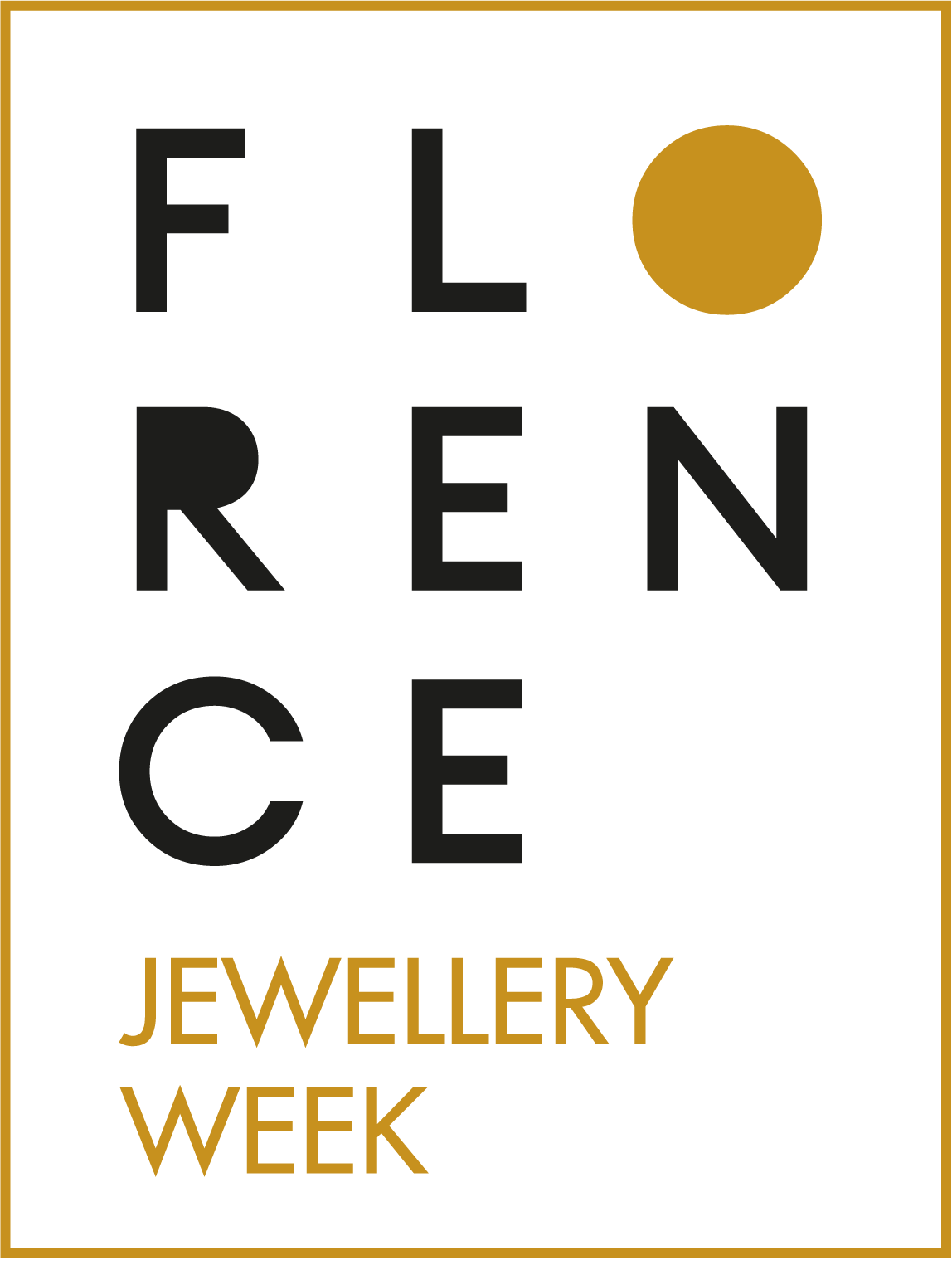Lectures
Waldensian Foresteria in Florence – Via dei Serragli, 49
On the central days of the event, 30th April and 1st May, in the Foresteria Valdese di Firenze – Via dei Serragli, 49, there will be a series of speeches given by experts in jewellery, design and visual arts, namely Roberta Bernabei, Maria Laura La Mantia, Paola Stroppiana, Federica Fontana, Carla Riccoboni, Barbara Schmidt, Nantia Koulidou, and by some of the invited artists: Conversation Piece, Lauren Kalman, Ana Rajcevic, Anya Kivarkis, and Jayne Wallace, Annamaria Zanella & Renzo Pasquale. The meetings are an opportunity to deepen the themes examined and to describe some of the projects in the exhibition, as well as to offer a wide audience the opportunity to approach and learn about a complex reality in expansion.
The conferences are held in the hall of the Waldensian Foresteria in Florence, Via dei Serragli, 49, on April 30th and May 1st.
Participation free of charge is open to all, but to access the conference room you must register online, or register directly at the desk, during the FJW days, bearing in mind that online registrations take precedence, also based on the availability of seats , which are limited.
To book contact
Saturday – 30 April
Introduction by Giò Carbone and Alice Rendon
30/04/2022 – 10.30 -10.45

Barbara Schmidt
Barbara Schmidt
30/04/2022 – 11:00 – 11:40
How can we grasp intangible values? About an attempt to redefine jewellery by etymological roots
This study of the etymology of terms related to jewellery reveals that through linguistic analysis we can, so to speak, watch our ancestors think. We trace how different, closely interwoven semantic meanings have developed from a phonetically existing basic form. Through language, our current understanding of jewellery always contains certain expectations, values and messages. Rarely enough, however, do we make ourselves aware of these universalities that span the globe. For a contemporary form of expression today, it is therefore worthwhile to know our linguistically anchored system of reference: the typically human pleasure in beautiful, rare and precious objects (e.g. gioièllo) and their role in emphasising physical attractiveness (e.g. Schmuck), as well as their function as a sign of spirituality (e.g. kosmos), wealth (e.g. rota) and status (e.g. skarb). They also serve as a means of communication (e.g. bijoux), as a link between sometimes distant cultures (e.g. tachshit) or show the love between two people (e.g. ehe). Why do we make and wear jewellery to this day? How do we show ourselves as Homo decorans and Homo decorates? Let’s talk about it!
Come possiamo cogliere i valori immateriali? Per un tentativo di ridefinizione del gioiello attraverso le radici etimologiche
Questo studio dell’etimologia dei termini legati al gioiello rivela che attraverso l’analisi linguistica possiamo, per così dire, guardare i nostri antenati pensare. Ripercorriamo il modo in cui i diversi significati semantici, strettamente intrecciati, si sono sviluppati a partire da una forma di base esistente a livello fonetico. Attraverso il linguaggio, la nostra attuale comprensione del gioiello contiene sempre determinate aspettative, valori e messaggi. Raramente, tuttavia, ci rendiamo conto di queste universalità che abbracciano il mondo. Per una forma espressiva contemporanea oggi vale quindi la pena di conoscere il nostro sistema di riferimento ancorato linguisticamente: il piacere tipicamente umano per gli oggetti belli, rari e preziosi (es. gioièllo) e il loro ruolo nel sottolineare l’attrattiva fisica (es. Schmuck), così come la loro funzione come segno di spiritualità (es. kosmos), ricchezza (es. rota) e status (es. skarb). Servono anche come mezzo di comunicazione (es. bijoux), come collegamento tra culture a volte distanti (es. tachshit) o mostrano l’amore tra due persone (es. ehe). Perché facciamo e indossiamo gioielli ancora oggi? Come ci mostriamo come Homo decorans e Homo decorates? Parliamone!
Barbara Schmidt was seized by her passion for jewellery at an early age. She learned the profession of goldsmith in Munich, worked with great artists in various cities and countries and studied jewellery design in Hanau at the Staatliche Zeichenakademie.
She completed her Master of Arts degree in Design Management at the University of Birmingham with distinction.
She has been a self-employed jewellery designer since 1991, teaches in various international institutions, juries and curates jewellery competitions. Since 2005, she has been the head of the Academy for Design of the Chamber of Trade and Crafts for Munich and Upper Bavaria and teaches design to committed craftspersons. She lives and works in Munich, from where she researches the origins of jewellery and design.
Barbara Schmidt ha sviluppato da giovanissima una passione per la gioielleria. Ha imparato la professione di orafa a Monaco, ha lavorato con grandi artisti in varie città e paesi e ha studiato design del gioiello ad Hanau alla Staatliche Zeichenakademie.
Ha completato il suo Master of Arts in Design Management all’Università di Birmingham con lode.
Lavora in proprio come designer di gioielli dal 1991, insegna in varie istituzioni internazionali, fa parte di giurie e cura concorsi dedicati al gioiello.
Dal 2005 è a capo dell’Accademia di Design della Camera di Commercio e dell’Artigianato di Monaco e dell’Alta Baviera e insegna design agli artigiani impegnati. Vive e lavora a Monaco di Baviera, dove conduce ricerche sulle origini del gioiello e del design.
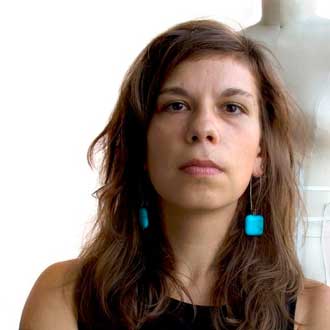
Lauren Kalman
Lauren Kalman
30/04/2022 – 11:45 – 12:25
Crafting the Body
Detroit, USA based artist Lauren Kalman will discuss her multi-media work that combines jewelry, craft, sculpture, video, photography, and performance. Kalman’s work is rooted in jewelry and uses craft mediums and decorative objects as a strategic choice. Her performance videos and images place the body in often uncomfortable relationships to jewelry, wearable objects, and the built environment. Through these performances using her body, her work investigates constructions of the ideal and the feminine and their impacts on self-image and identity, the politics of craft, and the built environment.
Costruire il corpo
L’artista Lauren Kalman di Detroit, USA, parlerà del suo lavoro multimediale che combina gioielli, artigianato, scultura, video, fotografia e performance. Il lavoro della Kalman è radicato nella gioielleria e usa mezzi artigianali e oggetti decorativi come scelta strategica. I suoi video e le sue immagini performative pongono il corpo in relazioni spesso scomode con i gioielli, gli oggetti da indossare e l’ambiente costruito. Attraverso queste performance che utilizzano il suo corpo, il suo lavoro indaga le costruzioni dell’ideale e del femminile e il loro impatto sull’immagine di sé e sull’identità, la politica dell’artigianato e l’ambiente costruito.
Lauren Kalman is a visual artist based in Detroit USA. Raised in the Cleveland, Kalman completed her MFA in Art and Technology from the Ohio State University and earned a BFA with a focus in Metals from Massachusetts College of Art.
Her work has been featured in exhibitions at the Renwick Gallery at the Smithsonian Museum of American Art, Museum of Arts and Design, Museum of Contemporary Craft, Cranbrook Art Museum, Contemporary Art Museum Houston, Museum of Fine Arts Boston, Mint Museum, World Art Museum in Beijing, and the Musée d’Art Moderne de la Ville de Paris among others. Her work is in the permanent collection of the Françoise van den Bosch Foundation at the Stedelijk Museum Amsterdam, Museum of Fine Arts Boston, Smithsonian Museum of American Art, Detroit Institute of Art, Museum of Arts and Design, and the Korean Ceramics Foundation.
She has been awarded residencies at the Corning Museum of Glass, Bemis Center, Australian National University, Corporation of Yaddo, Virginia Center for Creative Arts, Brush Creek Arts Foundation, and Haystack. She has received Chenven Foundation, Ludwig Vogelstein Foundation, Puffin Foundation, Puffin Foundation West, and ISE Cultural Foundation grants. In 2020 she received the Françoise van den Bosch Award for her career’s impact on the jewelry field.
She a dedicated educator and believes strongly in empowerment through education. She has taught at institutions ranging from community colleges and private art schools to the Ivy League, including Brown University and the Rhode Island School of Design. Currently she is an Associate Professor at Wayne State University in Detroit.
Lauren Kalman è un’artista visiva che vive a Detroit, USA. Cresciuta a Cleveland, Kalman ha completato il suo MFA in Arte e Tecnologia presso la Ohio State University e ha conseguito un BFA con specializzazione in Metalli presso il Massachusetts College of Art.
Il suo lavoro è stato esposto alla Renwick Gallery dello Smithsonian Museum of American Art, al Museum of Arts and Design, al Museum of Contemporary Craft, al Cranbrook Art Museum, al Contemporary Art Museum di Houston, al Museum of Fine Arts di Boston, al Mint Museum, al World Art Museum di Pechino e al Musée d’Art Moderne de la Ville de Paris. Il suo lavoro è nella collezione permanente della Françoise van den Bosch Foundation allo Stedelijk Museum di Amsterdam, al Museum of Fine Arts di Boston, allo Smithsonian Museum of American Art, al Detroit Institute of Art, al Museum of Arts and Design e alla Korean Ceramics Foundation.
Ha ottenuto residenze al Corning Museum of Glass, Bemis Center, Australian National University, Corporation of Yaddo, Virginia Center for Creative Arts, Brush Creek Arts Foundation e Haystack. Ha ricevuto sovvenzioni da Chenven Foundation, Ludwig Vogelstein Foundation, Puffin Foundation, Puffin Foundation West e ISE Cultural Foundation. Nel 2020 ha ricevuto il Françoise van den Bosch Award per l’impatto della sua professione nel campo dei gioielli.
È un’educatrice impegnata e crede fortemente nell’empowerment attraverso l’istruzione. Ha insegnato in istituzioni che vanno dai community college e dalle scuole d’arte private alla Ivy League, tra cui la Brown University e la Rhode Island School of Design. Attualmente è professore associato alla Wayne State University di Detroit.
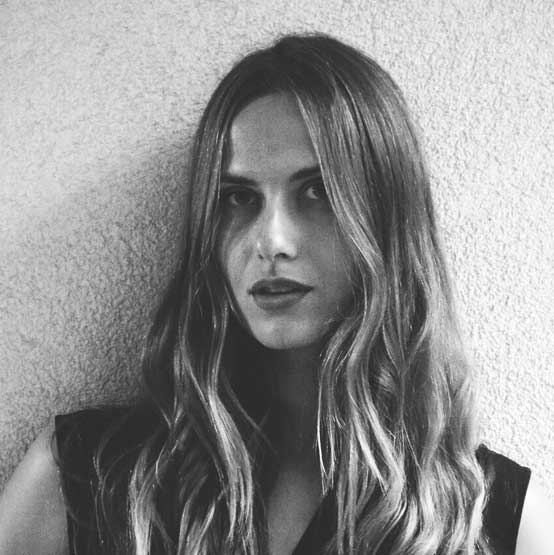
Ana Rajcevic
Ana Rajcevic
30/04/2022 – 12:30 – 13:10
The Prosthetic Creatures
The cyborg, the chimera, the robot, the ab-human; …these ‘monsters’ created by science have a long history in Western and Eastern culture, but this history is one of mutability and hybridity. Standing at the crossroads of multiple genres, these hybrids are a cipher for the ever-changing relationships between humanity, technology, and politics. Through my personal artistic practice and research, I will present the idea of the “prosthetic Creatures” or “prosthetic body -sculptures” that I have been exploring in my work for the past 10 years. Situated at the intersection of sculpture and body-art, my work plays with the idea of hybridity. By merging human and non-human parts: bodies, technologies, prosthetics and materials, I ask: What is the future of the body as we transform into Cyborgs and Chimeras? I will present personal as well as collaborative works I have done, from Museum pieces to Theater productions, showing not just the final outcomes but also practical – making processes of those artworks.
Le creature protesiche
Il cyborg, la chimera, il robot, l’ab-umano; … questi “mostri” creati dalla scienza hanno una lunga storia nella cultura occidentale e orientale, ma questa storia è una storia di mutevolezza e ibridazione. Trovandosi all’incrocio di più generi, questi ibridi sono cifra dei rapporti sempre mutevoli tra umanità, tecnologia e politica. Attraverso la mia pratica artistica personale e la mia ricerca, presenterò l’idea delle “Creature protesiche” o “corpi protesici -sculture” che ho esplorato nel mio lavoro negli ultimi 10 anni. Situato all’intersezione tra scultura e body-art, il mio lavoro gioca con l’idea di ibridazione. Fondendo parti umane e non umane: corpi, tecnologie, protesi e materiali, mi chiedo: qual è il futuro del corpo mentre ci trasformiamo in cyborg e chimere? Presenterò lavori personali e collaborativi cui mi sono dedicata, da pezzi da museo a produzioni teatrali, mostrando non solo i risultati finali ma anche i processi di realizzazione pratica di queste opere d’arte.
Ana Rajcevic is a Serbian artist based between London and Berlin. Her work spans across multiple platforms that include installations, sculptures, performances and photo/video works.
Ana completed her studies at the London University of the Arts (Master of Arts, 2012), and is at the moment doing PhD (Artistic Research) at the University of Applied Arts in Vienna. Her works have been exhibited internationally, in museums and galleries such as the Louvre (FR), Smithsonian Museum (USA), Boijmans Museum (NL), and Venice Biennale (IT), and are in the permanent collection of Design Museum den Bosch (NL). Furthermore, Rajcevic work has been published in print and digital media such as the “Independent”, the “Guardian”, the “Wired”, the “CNN”, among others. She has received multiple awards for her work, and since 2015 she has been elected member of the RSA-Royal Society of Arts in London. She regularly works and collaborates within the performing arts field, and her performance collaborations were shown in venues such as Sadler’s Wells (UK), Haus der Kulturen der Welt (DE), Volkstheater (AU) and Münchner Kammerspiele(DE).
Ana Rajcevic è un’artista serba che vive tra Londra e Berlino. Il suo lavoro abbraccia diversi linguaggi espressivi che includono installazioni, sculture, performance e lavori foto/video.
Ha completato i suoi studi presso l’Università delle Arti di Londra (Master of Arts, 2012) e sta attualmente svolgendo un dottorato di ricerca artistica presso l’Università di Arti Applicate di Vienna. Le sue opere sono state esposte a livello internazionale, in musei e gallerie come il Louvre (FR), lo Smithsonian Museum (USA), il Museo Boijmans (NL) e la Biennale di Venezia (IT), e fanno parte della collezione permanente del Design Museum den Bosch (NL). Inoltre, i lavori di Rajcevic sono stati pubblicati su media cartacei e digitali come l'”Independent”, il “Guardian”, il “Wired”, la “CNN”, tra gli altri. Ha ricevuto numerosi premi per il suo lavoro e dal 2015 è stata eletta membro della RSA-Royal Society of Arts di Londra. Lavora regolarmente e collabora nel campo delle arti performative, e le sue collaborazioni performative sono state mostrate in eventi come Sadler’s Wells (UK), Haus der Kulturen der Welt (DE), Volkstheater (AU) e Münchner Kammerspiele (DE).

Conversation Piece
Artists
Conversation Piece
30/04/2022 – 15:00 – 15:40
Opaque Transparencies
The lecture focuses on recurring subjects and questions that have become central to the artistic collaboration Conversation Piece, particularly the notion of anthropogenic sublime, the relation between transparency and the opaque in the material flows that lie behind technological objects and other, interconnected systems of making and consuming. Through the context of jewellery, the lecture reflects on how an extractive logic has profoundly shaped our world and considers non-extractive modes of making and knowing as a way to understand the interconnections and materialities of entangled ‘bodies’ and their surroundings.
Trasparenze Opache
La conferenza si concentra su temi e questioni ricorrenti che sono diventati centrali nella collaborazione artistica di Conversation Piece, in particolare la nozione di sublime antropogenico, la relazione tra trasparenza e opacità nei flussi materiali che risiede negli oggetti tecnologici e altri sistemi interconnessi alla produzione e al consumo. Attraverso il contesto della gioielleria, la conferenza riflette su come una logica estrattiva abbia profondamente plasmato il nostro mondo e considera modi non estrattivi di fare e conoscere come un modo per comprendere le interconnessioni e le materialità dei “corpi” intrecciati e dell’ambiente circostante.
Conversation Piece, an artistic collaboration initiated in 2011 by artists Beatrice Brovia (IT/ SE) and Nicolas Cheng (HK/SE), can be intended as a hands-on study on interconnectedness and interdependency: an ongoing reflection on making as a dialogic space, and on the intimate, enfolding boundaries that connect materials, objects, people, and technology in the complex time-scape of the Anthropocene.
Conversation Piece was awarded the First Prize (professional category) – New Traditional Jewellery at the 2014 Sieraad Art Fair, and the Bronze Prize at the 2015 Cheongju International Craft Biennale. Their collaboration work has been published and exhibited internationally, such as at Triennale Design Museum, Milan (IT), Pinakothek der Moderne, Munich (DE), MAD – The Museum of Arts and Design, New York (USA), Design Miami and Basel (USA/CH) and The Dowse Art Museum, (NZ), among others. Their work is included in the public collections of Design Museum Den Bosch (NL), Stichting Françoise van den Bosch Amsterdam (NL), Museum Arnhem (NL), and Pinakothek der Moderne, Munich (DE).
Brovia received a BSc in Interior Architecture from Politecnico di Milano, and an MFA in Jewellery and Corpus from Konstfack in 2009; since 2013 she has been teaching at Ädellab, Konstfack, where she is senior lecturer in jewellery and head of the Bachelor Program.
Cheng graduated with a BA from the Design Academy Eindhoven in 2006, and earned his MFA in Jewellery and Corpus from Konstfack in 2010. He obtained his PhD in Fine Arts with specialisation in Jewellery and Crafts from the University of Gothenburg in 2019.
Conversation Piece, una collaborazione artistica iniziata nel 2011 dagli artisti Beatrice Brovia (IT/SE) e Nicolas Cheng (HK/SE), può essere intesa come uno studio pratico sull’interconnessione e l’interdipendenza: una riflessione continua sul fare come spazio dialogico e sui confini intimi e avvolgenti che collegano materiali, oggetti, persone e tecnologia nel complesso paesaggio temporale dell’Antropocene. Conversation Piece ha ricevuto il Primo Premio (categoria professionale) – Nuova Gioielleria Tradizionale alla Sieraad Art Fair 2014, e il Premio di Bronzo alla Cheongju International Craft Biennale 2015. Il loro lavoro di collaborazione è stato pubblicato ed esposto a livello internazionale, come al Triennale Design Museum, Milano (IT), Pinakothek der Moderne, Monaco (DE), MAD – The Museum of Arts and Design, New York (USA), Design Miami e Basel (USA/CH) e The Dowse Art Museum, (NZ), tra gli altri. Il suo lavoro è incluso nelle collezioni pubbliche del Design Museum Den Bosch (NL), Stichting Françoise van den Bosch Amsterdam (NL), Museum Arnhem (NL), e Pinakothek der Moderne, Monaco (DE).
Brovia ha conseguito una laurea in architettura d’interni al Politecnico di Milano e un master in Gioielleria e Corpus alla Konstfack nel 2009; dal 2013 insegna all’Ädellab, Konstfack, dove è docente senior di gioielleria e responsabile del programma di Bachelor.
Cheng si è laureata con un BA presso la Design Academy Eindhoven nel 2006, e ha conseguito il suo MFA in Gioielleria e Corpus presso Konstfack nel 2010. Ha ottenuto un dottorato in Belle Arti con specializzazione in Gioielleria e Artigianato presso l’Università di Göteborg nel 2019.

Anya Kivarkis
Anya Kivarkis
30/04/2022 – 15:45 – 16:25
Jewelry and Film
Anya Kivarkis will discuss recent bodies of jewelry focused work and their relationship to film, from the contemporary Hollywood Red Carpet to cinema such as Alain Resnais’, Last Year at Marienbad and Alfred Hitchcock’s, To Catch a Thief.
Gioielli e Film
Anya Kivarkis discuterà i recenti corpi di lavoro incentrati sui gioielli e la loro relazione con il film, dal Red Carpet contemporaneo di Hollywood al cinema come , Last Year at Marienbad di Alain Resnais e To Catch a Thief di Alfred Hitchcock.
Anya Kivarkis is currently Professor and Area Head of Jewelry and Metalsmithing at the University of Oregon in Eugene (US). She received a BFA in Craft from the University of Illinois in Champaign-Urbana in 1999, and an MFA in Metal from the State University of New York, SUNY, New Paltz in 2004. Recent exhibitions include ‘Site Effects’ at the Bavarian Association of Arts and Crafts (Germany), ‘Time and the Other’ with Mike Bray at Sienna Patti at The Firehouse at Fort Mason Center for Art and Culture (San Francisco, US), and ‘What Needs to be Said,’ an exhibition of Hallie Ford Fellows that traveled throughout Oregon (US). Kivarkis was a recipient of a Hallie Ford Fellowship in the Visual Arts (2016), a University of Oregon, Summer Stipend for Humanities and Creative Arts Faculty (2021), Presidential Fellowship in Humanistic Studies (2020), and Faculty Excellence Award (2014), a Sienna Gallery Emerging Artist Award (2007), and multiple Individual Artists Fellowships and Career Opportunity Grants supported by the Oregon Arts Commission and the Hallie Ford Foundation.
Kivarkis has been a visiting artist and lectured at institutions including SUNY, New Paltz, Cranbrook Academy of Art, University of Wisconsin in Milwaukee and Madison, Rhode Island School of Design, and University of Georgia in Athens. She has been included in publications such as Metalsmith, American Craft, The New York Times and Italian Elle Magazines. Her work has been included in collections such as the Houston Museum of Fine Arts, The Museum of Fine Arts, Boston, Tacoma Art Museum, The Rotasa Foundation, and the Museum of Contemporary Craft in Portland. She is represented by Sienna Patti US and Galerie Rob Koudijs in the Netherlands.
Anya Kivarkis è attualmente professoressa e responsabile del Dipartimento di Gioielleria e Metallurgia all’Università dell’Oregon a Eugene (USA). Ha conseguito un BFA in Craft all’Università dell’Illinois a Champaign-Urbana nel 1999, e un MFA in Metallo alla State University of New York, SUNY, New Paltz nel 2004. Mostre recenti includono “Site Effects” alla Bavarian Association of Arts and Crafts (Germania), “Time and the Other” con Mike Bray a Sienna Patti at The Firehouse at Fort Mason Center for Art and Culture (San Francisco, USA), e “What Needs to be Said”, una mostra di Hallie Ford Fellows che ha viaggiato per tutto l’Oregon (USA). Kivarkis ha ricevuto l’Hallie Ford Fellowship nelle Arti Visive (2016), la University of Oregon, Summer Stipend for Humanities and Creative Arts Faculty (2021), il Presidential Fellowship in Humanistic Studies (2020), la Faculty Excellence Award (2014), il Sienna Gallery Emerging Artist Award (2007), e molteplici Individual Artists Fellowships e Career Opportunity Grants sostenuti dalla Oregon Arts Commission e dalla Hallie Ford Foundation.
Kivarkis è stata artista in visita e ha tenuto conferenze presso istituzioni come SUNY, New Paltz, Cranbrook Academy of Art, Università del Wisconsin a Milwaukee e Madison, Rhode Island School of Design e l’Università della Georgia ad Athens. È stata inclusa in pubblicazioni come Metalsmith, American Craft, The New York Times e Italian Elle Magazine. Il suo lavoro è stato incluso in collezioni come lo Houston Museum of Fine Arts Arts, il Museum of Fine Arts di Boston, il Tacoma Art Museum, la Rotasa Foundation e il Museum of Contemporary Craft di Portland. È rappresentata da Sienna Patti US e dalla Galerie Rob Koudijs nei Paesi Bassi.

Jayne Wallace
Jayne Wallace
30/04/2022 – 16.30 –17.10
The dialogic potential of Digital Jewellery in complex contexts
Jewellery has the potential to connect us to people, places and aspects of ourselves like no other kind of object. Jayne will explore how digital technology can offer poetic extensions to these capabilities of jewellery through examples from her work that explores: personhood in dementia, sense of self through relationships with others and ongoing healthy relationships with the dead. Design methods that she uses with individuals in research projects will show the ways in which digital jewellery helps people to explore these personal contexts and as acts of personal sense making.
Il potenziale dialogico dei gioielli digitali in contesti complessi
I gioielli hanno il potenziale di connetterci con persone, luoghi e aspetti di noi stessi come nessun altro tipo di oggetto è in grado di fare. Jayne Wallace esplorerà la tecnologia digitale come strumento capace di offrire estensioni poetiche a queste capacità del gioiello, attraverso alcuni esempi del suo lavoro che indagano: la personalità nella demenza, il senso del sé attraverso le relazioni con gli altri, il mantenimento di relazioni sane con persone decedute. I metodi di design che usa con i soggetti coinvolti nei progetti di ricerca mostreranno i diversi modi in cui i gioielli digitali possono aiutare le persone ad esplorare questi contesti personali, affermandosi come atti di creazione di senso personale.
Jayne Wallace is professor of craft, digital creativity and wellbeing in the design school at Northumbria University, Newcastle, UK. After her bachelor’s degree in jewellery and metalwork she became a gallery officer in Electrum gallery, London gaining first-hand knowledge of important contemporary jewellery pieces and co-curating international exhibitions. She continued her studies through a masters degree and PhD exploring the communicative potential of contemporary jewellery and digital technologies. Since gaining her PhD in 2007 she has continued to undertake and lead research projects exploring how digital jewellery and artefacts can support sense of self in a range of challenging contexts. Much of her work is in the contexts of dementia, end of life and bereavement. She co-founded the Research Through design conference series with Prof Joyce Yee in 2013 and co-founded the Journal of Jewellery Research with Dr Roberta Bernabei in 2017 for which she remains co-editor. She is an editorial board member for Design for Health journal and adjunct professor at Monash University Australia.
Jayne Wallace è professoressa di artigianato, creatività digitale e benessere nella scuola di design della Northumbria University, Newcastle, Regno Unito. Dopo la laurea in gioielleria e lavorazione dei metalli, è diventata agente della galleria Electrum di Londra, acquisendo una conoscenza diretta di importanti pezzi di gioielleria contemporanea e curando mostre internazionali. Ha continuato i suoi studi con un master e un dottorato esplorando il potenziale comunicativo del gioiello contemporaneo e delle tecnologie digitali. Da quando ha ottenuto il dottorato nel 2007 ha continuato a intraprendere e condurre progetti di ricerca esplorando come i gioielli e gli artefatti digitali possano sostenere il senso del sé in una serie di contesti difficili. Gran parte del suo lavoro si svolge in contesti di demenza, fine vita e lutto. Ha co-fondato la serie di conferenze Research Through design con la professoressa Joyce Yee nel 2013 e ha co-fondato il Journal of Jewellery Research con la dottoressa Roberta Bernabei nel 2017, di cui è ancora co-editrice. È membro del comitato editoriale della rivista Design for Health e professore aggiunto alla Monash University Australia.
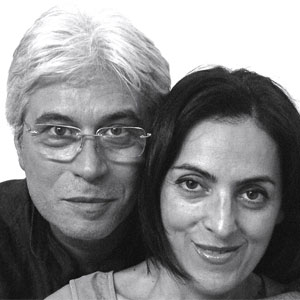
Annamaria Zanella, Renzo Pasquale
Annamaria Zanella, Renzo Pasquale
30/04/2022 – 17:15 – 17:30
Moon Gallery Art Project
Annamaria Zanella and Renzo Pasquale are two Paduan goldsmith artists who took part in the “Moon Gallery Art Project” competition in 2020, an initiative born of the collaboration of several European and American astrophysics universities, ESA and NASA.
The project aims to bring a small art gallery to the Moon in 2025.
An international jury has selected 100 artists from all over the world who, for the occasion, have each created a work measuring just 1 cubic cm.
For this challenge Annamaria Zanella created THE CELL, a conceptual reference to the biological formation of the human race. Renzo’s contribution sees science as a universal value; his Gold cube is engraved with a portrait of Galileo Galilei.
This evening they will talk to us about these messages of art towards the Moon… in the form of jewellery.
Moon Gallery Art Project
Annamaria Zanella e Renzo Pasquale sono due artisti orafi padovani che nel 2020 hanno partecipato al concorso “Moon Gallery Art Project”, iniziativa nata dalla collaborazione di diverse università di astrofisica europee e americane, ESA e NASA.
Il progetto mira a portare una piccola galleria d’arte sulla Luna nel 2025.
Una giuria internazionale ha selezionato 100 artisti da tutto il mondo che, per l’occasione hanno realizzato un ‘opera ciascuno che misura solo1 cm cubo.
Per questa sfida Annamaria Zanella ha creato THE CELL, un concettuale riferimento alla formazione biologica del genere umano. Il contributo di Renzo vede la scienza come valore universale; nel suo Gold cube è inciso il ritratto di Galileo Galilei.
Questa sera ci parleranno di questi messaggi d’arte verso la Luna…in forma di gioiello.
Annamaria Zanella (Padua, 1966) graduated at the “P. Selvatico” Institute of Fine Arts, Padua in 1985 in the Jewellery section. From 1992, she obtained the Diploma in Sculpture at the Academy of Arts in Venice.
She started her personal and artistic search in contemporary jewellery when she started her teaching at the “P. Selvatico” Institute of Fine Arts in 1987 in Padua.
The Italian “Arte Povera” movement inspired her conceptual works from the beginning. Precious and “less precious” materials (broken glass, resin, copper, gold, plastics, enamels, wood and paints) are transformed into provocative shapes and signs. Surfaces are corroded; precious metals as well as poor materials are used, without considering their value.
Her works are about the everyday lives of women, history of her own life. Just like pages from an autobiography, each piece stems from a different constructional arrangement like a continuous “metamorphosis”.
She won the Herbert Hofmann prize in Munich in 1997 and in 2006 and the Bayerischer Staatpreis Gold Medaille in 2002.
Her highly expressive works of art are in many of the most important Museum Collections in Europe and in the USA.
Annamaria Zanella (Padova, 1966) si è diplomata all’Istituto di Belle Arti “P. Selvatico” di Padova nel 1985 nella sezione di gioielleria. Nel 1992 ha conseguito il Diploma di Scultura presso l’Accademia delle Arti di Venezia.
L’avvio della sua ricerca personale e artistica nel gioiello contemporaneo coincide con l’inizio dell’insegnamento all’Istituto di Belle Arti “P. Selvatico” nel 1987 a Padova. Il movimento italiano dell’Arte Povera ha ispirato i suoi lavori concettuali fin dall’inizio. Materiali preziosi e “meno preziosi” (vetro rotto, resina, rame, oro, plastica, smalti, legno e vernici) vengono trasformati in forme e segni provocatori. Le superfici sono corrose; vengono utilizzati sia metalli preziosi che materiali poveri, senza considerare il loro valore. Le sue opere riguardano la vita quotidiana delle donne, la storia della sua stessa vita. Come pagine di un’autobiografia, ogni pezzo nasce da una diversa disposizione costruttiva come una continua “metamorfosi”. Ha vinto il premio Herbert Hofmann a Monaco nel 1997 e nel 2006 e il Bayerischer Staatpreis Gold Medaille nel 2002. Le sue opere d’arte altamente espressive si trovano in molte delle più importanti collezioni di musei in Europa e negli Stati Uniti.
Renzo Pasquale (Padua, 1947) studied Biology at the University of Biological Sciences in Padua from 1967 to 1974. A chance meeting with a great master gemmologist and gemstone carver began his personal research path in the art of working with stones and metals. His geometric shapes, transparencies and great technical skill in working semi-precious stones impressed Professor Mario Pinton who, as headmaster of the Pietro Selvatico Art Institute, commissioned him to set up a workshop for the artistic working of semi-precious and hard stones and to teach the art of glyptics to the students of the Institute. His teaching led Renzo to work with other goldsmiths from the “Pietro Selvatico” Art Institute, Francesco Pavan, Giampaolo Babetto and Diego Piazza, and it was with them that he began to exhibit his work in various exhibitions from the 1980s to the present day in galleries and museums in Europe, the United States and Japan. His work speaks of the transparencies of matter and infinite of infinite variations of light reflecting on the surfaces of these jewels made of rock crystal, lapis lazuli, onyx, chrysoprase, agate, jasper and jade. Sculptures in the form of jewels that can be worn for their purity of form and volume. Essentiality in design, concrete perceptions born of the Euclidean search for beauty.
Renzo Pasquale (Padova, 1947) ha studiato Biologia all’Università di scienze Biologiche di Padova dal 1967 al 1974. Da un incontro casuale con un grande maestro gemmologo e intagliatore di pietre preziose è iniziato il suo personale percorso di ricerca nell’arte della lavorazione delle pietre e dei metalli. Le sue forme geometriche, le trasparenze, la grande abilità tecnica nel lavorare le pietre dure hanno colpito il prof. Mario Pinton che, come preside dell’Istituto d’Arte Pietro Selvatico, lo ha incaricato di istituire un laboratorio di lavorazione artistica delle pietre dure e semipreziose e di insegnare l’arte della glittica agli allievi dell’Istituto stesso. L’insegnamento ha portato Renzo a confrontarsi con altri artisti orafi dell’Istituto d’arte “Pietro Selvatico”, Francesco Pavan, Giampaolo Babetto, Diego Piazza e proprio con loro ha iniziato ad esporre i propri lavori in varie mostre dagli anni ’80 sino ai giorni nostri in gallerie e musei in Europa, Stati Uniti e Giappone. Il suo lavoro parla di trasparenze della materia e di infinite variazioni della luce che si riflette sulle superfici di questi gioielli in cristallo di rocca, lapislazzuli, onice, crisoprasio, agata, diaspro, giada. Sculture in forma di gioiello che si possono indossare per la loro purezza di forma e di volumi. Essenzialità nel disegno, percezioni concrete nate dalla ricerca euclidea della bellezza.
Sunday – 1 May
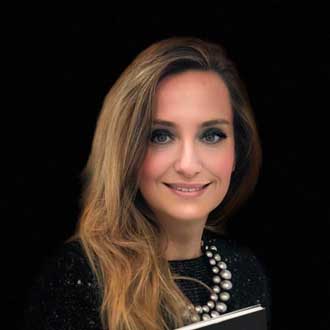
Paola Stroppiana
Paola Stroppiana
01/05/2022 – 10:30 – 11:10
The Bollmann Collection. Freedom and Beauty of ‘New Jewelry’
Over time, the Austrian couple Heidi and Karl Bollmann have built up one of the most prestigious private collections of contemporary jewellery in the world: over 1,000 pieces created by the most influential masters who have marked the history of contemporary jewellery from the 1950s to the present day.
The conference will be an opportunity to retrace the genesis and evolution of the collection, exhibited to the public for the first time in 2015 at the MAK, Museum of Applied Arts in Vienna, and exceptionally present with about 30 pieces of jewellery also on the occasion of the FJW 2022 with big names on the international scene; among them Manfred Bischoff, Peter Chang, Yasuki Hiramatsu, Fritz Maierhofer, Bruno Martinazzi, Francesco Pavan, Ruudt Peters, Gerd Rothmann, Peter Skubic.
The choices made will lead us to reconsider how collecting is the first, formidable, critical act that indissolubly binds creator, user and spectator.
La Collezione Bollmann. Libertà e Bellezza del “New Jewelry”
La coppia austriaca Heidi e Karl Bollmann ha costituito nel tempo una delle più prestigiose collezioni private di gioielli contemporanei al mondo: oltre 1000 esemplari realizzati dai Maestri più influenti che hanno segnato la storia del gioiello contemporaneo dagli anni ‘50 ad oggi.
La conferenza sarà occasione per ripercorre la genesi e l’evoluzione della collezione, esposta al pubblico per la prima volta nel 2015 al MAK, Museo delle Arti Applicate di Vienna, ed eccezionalmente presente con circa 30 gioielli anche in occasione della FJW 2022 con grandi nomi della scena internazionale; tra questi Manfred Bischoff, Peter Chang, Yasuki Hiramatsu, Fritz Maierhofer, Bruno Martinazzi, Francesco Pavan, Ruudt Peters, Gerd Rothmann, Peter Skubic.
Le scelte operate ci porteranno a riconsiderare come collezionare sia il primo, formidabile, atto critico, che lega indissolubilmente creatore, fruitore, spettatore.
Paola Stroppiana (Turin, 1974) is an art historian, journalist and independent curator. She graduated with honours in Medieval Art History from the Faculty of Literature and Philosophy at the University of Turin with a thesis on 15th-century sacred goldsmithing. After various working experiences in Rome, Florence and Milan in the organisation of exhibitions for museum institutions – including Palazzo Strozzi in Florence and Palazzo Reale in Milan – she managed a contemporary art gallery in Turin for more than twelve years. In recent years she has devoted much of her research to contemporary jewellery and artists’ jewellery in the historical context of the international scene from the Second World War to the present day. In addition to critical contributions to catalogues and numerous curatorships for exhibitions in private galleries, she has curated the exhibition Scultura Aurea. Gioielli d’artista per un Nuovo Rinascimento (Galleria Nazionale delle Marche – Palazzo Ducale di Urbino, 2019), Il Segno e l’Ornamento. I Gioielli di Gio’ Pomodoro, Museo del Gioiello di Vicenza – Basilica del Palladio, 2018), Gioielli Vertiginosi, Ada Minola e le avanguardie artistiche a Torino nel II dopoguerra (Museo Civico di Arte Antica di Torino – Palazzo Madama, 2016). She has given numerous lectures on the subject at the University of Aldo Moro in Bari, the Museo Civico di Arte Antica and the Pinacoteca Agnelli in Turin, the Accademia Albertina di Belle Arti in Turin, the Politecnico in Turin, the Politecnico in Milan and the Palazzo Ducale in Urbino.
Paola Stroppiana (Torino, 1974) è storica dell’arte, giornalista e curatrice indipendente. Si è laureata con lode in Storia dell’Arte Medioevale presso la Facoltà di Lettere e Filosofia dell’Università di Torino con una tesi sull’oreficeria sacra del XV secolo. Dopo diverse esperienze lavorative a Roma, Firenze e Milano nell’organizzazione di mostre per istituzioni museali – tra cui Palazzo Strozzi a Firenze e Palazzo Reale a Milano – ha gestito per più di dodici anni una galleria d’arte contemporanea a Torino. Negli ultimi anni ha dedicato gran parte della sua ricerca al gioiello contemporaneo e al gioiello d’artista nella contestualizzazione storica sulla scena internazionale dal Secondo Dopoguerra ad oggi. Oltre a contributi critici per cataloghi e numerose curatele per mostre in gallerie private, in ambito museale ha curato la mostra Scultura Aurea. Gioielli d’artista per un Nuovo Rinascimento (Galleria Nazionale delle Marche – Palazzo Ducale di Urbino, 2019), Il Segno e l’Ornamento. I Gioielli di Gio’ Pomodoro, Museo del Gioiello di Vicenza – Basilica del Palladio, 2018), Gioielli Vertiginosi, Ada Minola e le avanguardie artistiche a Torino nel II dopoguerra (Museo Civico di Arte Antica di Torino – Palazzo Madama, 2016). Sull’argomento ha tenuto numerose conferenze presso l’Università degli Studi Aldo Moro di Bari, Il Museo Civico di Arte Antica e la Pinacoteca Agnelli di Torino, l’Accademia Albertina di Belle Arti di Torino, il Politecnico di Torino, il Politecnico di Milano, il Palazzo Ducale di Urbino.
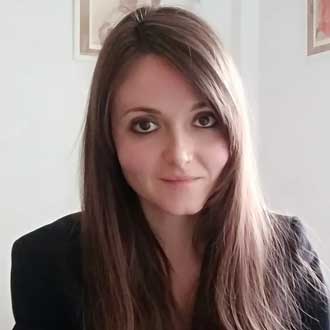
Federica Fontana
Federica Fontana
01/05/2022 – 11:15 – 11:55
Life beyond the skin: art and the posthuman
Ours is an age of profound technological, scientific and socio-cultural change: the digital revolution and advances in research in fields such as genetics, biology, neuroscience, robotics and artificial intelligence have had such an impact that they have led us to question the very concept of human being. But what exactly is meant by posthuman and how is it expressed in contemporary art? What is the contribution of artists in designing the forms of a humanity no longer at the centre of the universe? An introduction to the theme to orientate ourselves among mutant bodies and possible new forms of (co)existence.
La vita oltre la pelle: arte e postumano
La nostra è un’età di profondi cambiamenti tecnologici, scientifici e socio-culturali: la rivoluzione digitale e i progressi della ricerca in campi come genetica, biologia, neuroscienze, robotica, Intelligenza Artificiale hanno avuto un impatto tale da portarci a rimettere in discussione il concetto stesso di uomo. Ma cosa si intende esattamente per postumano e come si esprime nell’arte contemporanea? Qual è il contributo degli artisti nel progettare le forme di un’umanità non più al centro dell’universo? Un’introduzione al tema per orientarsi tra corpi mutanti e nuove possibili forme di (co)esistenza.
Federica Fontana is an art historian, lecturer and independent researcher born in Milan and based in Turin. In 2014 she graduated in History of Arts and Conservation of Artistic Heritage at Ca’ Foscari University in Venice. In 2016 she completed the Master in Art and Culture: marketing, communication and fundraising strategies at the Sole 24 ore Business School. From 2011 to 2016 she was involved in media monitoring at the Data Stampa agency. Following her interest in the intersections between art, science and new technologies in 2014 she founded Inanimanti, the first blog in Italy dedicated to the relationship between art and posthuman. From 2016 to 2020 she was editor-in-chief of Digicult, an international platform investigating the impact of new media on contemporary culture. She was part of the selection jury for the exhibition Digital Power: Activism, Advocacy and the Influence of Women Online, curated by Kathy Rae Huffman for the 2020 edition of Siggraph. She is a member of the Italian Posthuman Network. Since 2019 she has been teaching Art History. He collaborates with various publications, both Italian and international. Among her essays appeared in publications: Per un’educazione non antropocentrica. Elementi di postumanesimo nell’arte di Eva Kot’átková and Io amo il mio lavoro. Sulla passione e la felicità nelle industrie culturali.
Federica Fontana è storica dell’arte, docente e ricercatrice indipendente nata a Milano e di base a Torino. Nel 2014 si è laureata in Storia delle Arti e Conservazione dei Beni Artistici all’università Ca’ Foscari di Venezia. Nel 2016 ha completato il Master in Arte e cultura: strategie di marketing, comunicazione e fundraising presso la Sole 24 ore Business School. Dal 2011 al 2016 si è occupata di monitoraggio dei media presso l’agenzia Data Stampa. Seguendo il suo interesse per le intersezioni tra arte, scienza e nuove tecnologie nel 2014 ha fondato Inanimanti, il primo blog in Italia dedicato al rapporto tra arte e postumano. Dal 2016 al 2020 è stata caporedattrice di Digicult, piattaforma internazionale che indaga l’impatto dei nuovi media sulla cultura contemporanea. Ha fatto parte della giuria di selezione della mostra Digital Power: Activism, Advocacy and the Influence of Women Online, curata da Kathy Rae Huffman per l’edizione 2020 del Siggraph. È membro dell’Italian Posthuman Network. Dal 2019 è docente di Storia dell’Arte. Collabora con diverse testate, sia italiane che internazionali. Tra i suoi saggi comparsi in pubblicazioni: Per un’educazione non antropocentrica. Elementi di postumanesimo nell’arte di Eva Kot’átková e Io amo il mio lavoro. Sulla passione e la felicità nelle industrie culturali.
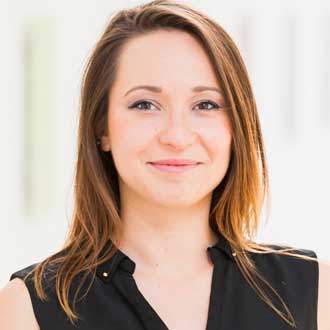
Nantia Koulidou
Nantia Koulidou
01/05/2022 – 12:00 – 12:40
Narratives, Digital Jewellery and the Self
Nantia will discuss Art Digital Jewellery practices through an in depth exploration of the materiality of digital technology and this applications. Digital jewellery is broadly understood as physical personal adornments and related on-body objects that incorporate electronics. Examples from art/craft practitioners, design researchers and students will be presented to contextualise the field within wearable technology, human-computer interaction and contemporary jewellery. She will provoke us to think: “Why should we care about the digital?”
Narrazioni, gioielli digitali e il Sé
Nantia discuterà le pratiche dell’Art Digital Jewellery attraverso un’esplorazione approfondita della materialità della tecnologia digitale e delle sue applicazioni. I gioielli digitali sono ampiamente intesi come ornamenti fisici personali e oggetti che incorporano l’elettronica posti in relazione al corpo. Saranno presentati esempi di professionisti dell’arte/artigianato, ricercatori di design e studenti per contestualizzare il campo della tecnologia indossabile, dell’interazione uomo-computer e della gioielleria contemporanea. Ci costringerà a domandarci: “Perché dovremmo preoccuparci del digitale?”
Dr. Nantia Koulidou is a design researcher and lecturer intrigued by how art jewellery practices and digital technologies are combined in poetic ways. Following craft methodologies and her fascination for found objects, she designs interactive objects that aim to broaden our expectations of what digital jewellery can be.
Her work contributes to jewellery and HCI (Human-computer Interaction) field by offering new interpretations of digital jewellery through theory and practice and to Design Research by enriching the role of creative practice to offer methodologies that are rooted in craft, empathy and dialogue.
Nantia joined SHU (Sheffield Hallam University, UK) as a lecturer in 2020 and since 2021 she took over the Course Leader role for the BA Jewellery, Materials and Design at SHU. Prior to this role, she worked as Research Associate on the EPSRC “Enabling Ongoingness: Content Creation & Consumption in the New Digital Age” at Northumbria University, UK (2018-2020). She has a background in architecture, participatory design and silversmithing.
Nantia Koulidou è una ricercatrice di design e docente interessata a come le pratiche di gioielleria artistica e le tecnologie digitali si combinano in modo poetico. Seguendo le metodologie artigianali e il suo fascino per gli oggetti trovati, progetta oggetti interattivi che mirano ad ampliare le nostre aspettative su ciò che i gioielli digitali possono essere.
Il suo lavoro contribuisce alla gioielleria e al campo dell’HCI (Human-computer Interaction) offrendo nuove interpretazioni della gioielleria digitale attraverso la teoria e la pratica e alla Design Research arricchendo il ruolo della pratica creativa per offrire metodologie che sono radicate nell’artigianato, nell’empatia e nel dialogo.
Nantia è entrata alla SHU (Sheffield Hallam University, UK) come docente nel 2020 e dal 2021 ha assunto il ruolo di Course Leader per il BA Jewellery, Materials and Design alla SHU. Prima di questo ruolo, ha lavorato come Research Associate sul progetto EPSRC “Enabling Ongoingness: Content Creation & Consumption in the New Digital Age” alla Northumbria University, UK (2018-2020). Ha un background in architettura, design partecipativo e argenteria.
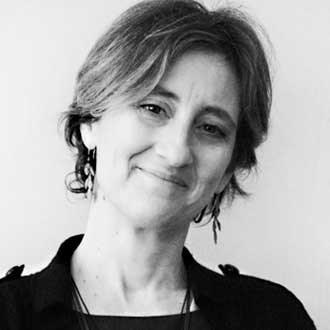
Maria Laura La Mantia
Maria Laura La Mantia
01/05/2022 – 15:00 – 15:40
Jewellery in the social distancing era
This study stems from the need I felt to investigate events, trends and first-hand accounts that took place during the global shutdown in the first pandemic phase. How did art, fashion and jewellery respond in the time of web-based communication and social distancing. The collapse of “normality” in the West has given rise to great changes: the temporary loss of freedom, the renunciation of progress, the suspension of democracy. How were the phenomena of signification made explicit? Does this investigation after two years regarding the reaction to change highlight all the differences and new questions linked to the constant change of global scenarios that has ensued? An analysis in the making to which we are called to turn our gaze.
Il gioiello nell’era del distanziamento sociale
Questo studio nasce dall’esigenza che ho sentito di indagare su eventi, tendenze e testimonianze dirette che hanno che hanno avuto luogo durante la chiusura globale nella prima fase pandemica. Come hanno risposto arte, moda e gioiello al tempo della comunicazione via web e del distanziamento sociale. Il crollo della “normalità” in occidente ha dato luogo a grandi cambiamenti: la perdita temporanea della libertà, la rinuncia al progresso, la sospensione della democrazia. I fenomeni di significazione come sono stati esplicitati? Questa indagine dopo due anni riguardo alla reazione al cambiamento mette in evidenza tutte le differenze e le nuove domande legate al mutamento costante degli scenari globali che ne è conseguito? Uno spunto di analisi in divenire a cui siamo chiamati a volgere lo sguardo.
Maria Laura La Mantia graduated in Rome at the Academy of Fashion and Costume in 1986 with a thesis on the accessory. In 1987 she moved to Naples where she worked with companies in the jewellery and accessories as a designer and learned the technique of enameling on precious metals, she deals with the restoration of antique enameled pieces and deepens the study of the history and styles of jewellery, taking an interest in the multidisciplinary approach to the subject and collecting rare and valuable texts and creating a technical library of the sector. She has been involved in training since 2001 for various institutions for the teaching of history of jewelry and applied decorative techniques. Since 2017 she has been teaching Project Culture at Le Arti Orafe. She collaborates with companies in the sector for the design of collections, fair projects, retail projects and visual merchandising for jewellery. She lives in Caserta and works between Naples, Rome and Florence.
Maria Laura La Mantia si diploma a Roma presso l’Accademia di Moda e Costume nel 1986 con una tesi sull’accessorio. Nel 1987 si trasferisce a Napoli dove lavora con aziende del settore orafo e accessori come designer e apprende la tecnica della smaltatura a fuoco su metalli preziosi, si occupa di restauro di pezzi antichi smaltati e approfondisce lo studio della storia e degli stili del gioiello, interessandosi all’approccio multidisciplinare alla materia e collezionando testi rari e pregiati e costituendo una biblioteca tecnica di settore. Si occupa di formazione dal 2001 per vari enti per gli insegnamenti di storia del gioiello e tecniche decorative applicate. Dal 2017 insegna Cultura del Progetto presso Le Arti Orafe. Collabora con aziende di settore per progettazione di collezioni , progetti fieristici , progetti retail e visual merchandising per oreficeria. Risiede a Caserta e lavora tra Napoli, Roma e Firenze.
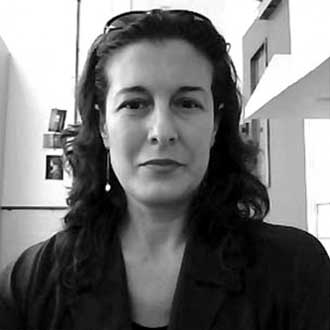
Roberta Bernabei
Roberta Bernabei
01/05/2022 – 15:45 – 16:25
Research through jewellery: Research projects comparing Practice-based and Practice-led PhDs in the United Kingdom.
This lecture entitled ‘Research through jewellery’ is inspired by the concept of Christopher Frayling (former Rector of the Royal College of Art in London) where for the first time he tried to explain the difference between ‘Research into art and design, Research through art and design, and Research for art and design ‘. These differences between the various working methods will be discussed with case studies. In particular, case studies concerning research defined by the terms: Practice-based and Practice-led where jewellery is the means to conduct scientific research. Through the case studies of some PhD students’ projects, it will be possible to understand the Project’s objective in a particular situation. The examples will show how Cultural Heritage research of jewellery is studied and preserved with the use of new technologies, followed by how these ancient techniques are analyzed to change them into sustainable practices.
Ricerca attraverso il gioiello: Progetti di ricerca a confronto tra Practice-based e Practice-led dottorati nel Regno Unito.
Questa lecture dal titolo ‘Ricerca attraverso il gioiello’ è ispirata al concetto di Christopher Frayling (ex-Rettore del Royal College of Art di Londra) dove per la prima volta si cerco’ di spiegare la differenza tra ‘Research into art and design, Research through art and design, and Research for art and design’. Queste differenze tra le varie metodologie di lavoro verranno discusse con dei casi studio. In particolar modo casi studio che riguardano la ricerca definita dai termini: Practice-based e Practice-led dove il gioiello è il mezzo per condurre ricerche scientifiche. Attraverso i casi studio di alcuni dottorandi si comprenderà la particolarità dell’obbiettivo del Progetto in una particolare situazione. Gli esempi mostreranno come la ricerca del Patrimonio Culturale dell’oreficeria del gioiello è studiata e preservata con l’utilizzo di nuove tecnologie, seguito da altri casi dove queste antiche tecniche vengono analizzate per renderle delle pratiche sostenibile
Dr Roberta Bernabei is a leading researcher in the field of Craft/Design Jewellery Research. She has been showing her work, curating several international exhibitions, published a monographic book and essays published by Taylor & Francis, Bloomsbury, Arnoldsche, and academic articles for more than two decades.
She has been working in an intensive research university since 2004, at the University of Loughborough, School of Design and Creative Arts, UK. Her role as associate professor is also complemented by an honorary position as visiting Reader at Birmingham City University in the Institute of Jewellery, Fashion and Textiles, including the role as international ambassador of the Institute and the “Craft Cultures” research cluster. Since 2015 she has been passionately active in building the field of Craft/Design Jewellery Research through instigating and leading the Journal of Jewellery Research. Together with Co-Editor and co-founder Prof Jayne Wallace they have published 4 volumes of open access peer review papers. She is currently leading a group of seven PhD students and founded a JRC Lab Jewellery Craft Research Lab specifically for studies on Jewellery as an aid for wellbeing, ICH in Craft, Art Jewellery and Jewellery design with the application of new technologies such as 3D printing, Filters and AR.
La dott.ssa Roberta Bernabei è una ricercatrice leader nel campo della ricerca nel Gioiello Craft/Design. Ha esposto il suo lavoro, curato diverse mostre internazionali, pubblicato un libro monografico e saggi editi da Taylor & Francis, Bloomsbury, Arnoldsche e articoli accademici per più di due decenni.
Dal 2004 lavora in un’università concentrata sulla ricerca intensiva, l’Università di Loughborough, School of Design and Creative Arts, Regno Unito. Il suo ruolo di professoressa associata è completato da un titolo onorario come visiting Reader presso la Birmingham City University, all’Institute of Jewellery, Fashion and Textiles, incluso il ruolo di ambasciatore internazionale dell’Istituto stesso e del cluster di ricerca “Craft Cultures”.
Dal 2015 si è dedicata con passione alla promozione del settore della ricerca scientifica del Gioiello Craft/Design attraverso l’istituzione e la guida del Journal of Jewellery Research. Insieme alla co-editrice e co-fondatrice, la prof. Jayne Wallace, ha pubblicato 4 volumi di saggi accademici peer reviewed e open access. Attualmente è leader di un gruppo di ricerca di sette dottorandi, ha fondato il JCR Lab Jewellery Craft Research Lab, dove i ricercatori svolgono attività di ricerca nell’ambito delle seguenti aree: il gioiello per il benessere, ICH in Craft, Art Jewellery e l’applicazione di nuove tecnologie come la stampa 3D, i filters e la Realtà Aumentata nel design del gioiello.
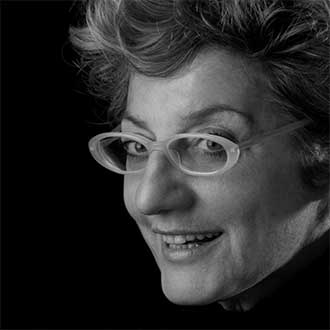
Carla Riccoboni
Carla Riccoboni
01/05/2022 – 16:30 – 18:00
Segni sul volto. New spaces for discussion and design
Project by Carla Riccoboni
Coordination Alice Rendon
SEGNI SUL VOLTO (SIGNS ON THE FACE) is the brainchild of the Italian designer and goldsmith Carla Riccoboni with the aim of designing a collection of facial objects as an opportunity to reflect on the identity value of ornamentation, charged with symbolic as well as decorative values: “At a time in history when the pandemic has forced us to cover our faces with a mask, we can think of it as the first and most significant means of communication.” (Riccoboni).
The project opened with a series of talks by various experts on facial decoration over the centuries, in the present and in possible future scenarios.
A second phase, reserved for those enrolled in the workshop, focused on collective design, a key moment in the initiative. The pieces created are in fact the outcome of the group’s choral effort, which worked in unison starting from the reflections that emerged in the first phase of the webinar, then developed through a process of co-creation to achieve a unitary synthesis.
The conference will be an opportunity to present the results of the project, documented in the exhibition, and to invite the lecturers at the webinar (anthropologist Francesco Bravin, art historian Alessandra Menegotto, jewellery historian Maria Laura La Mantia, Professor and design researcher Roberta Bernabei, jewellery designer and researcher Chiara Scarpitti) to comment on the work carried out, opening a dedicated debate.
Segni sul volto. Nuovi spazi di confronto e progetto
Ideazione Carla Riccoboni
Coordinamento Alice Rendon
SEGNI SUL VOLTO è nato da un’idea della designer e orafa italiana Carla Riccoboni con l’obiettivo di progettare una collezione di oggetti da viso, come occasione per riflettere sul valore identitario dell’ornamento, carico di valenze simboliche oltre che decorative: “In un momento storico in cui la pandemia ci ha costretto a coprire il viso con una maschera, si può ripensare ad esso come al primo e più significativo strumento di comunicazione.” (Riccoboni).
Il progetto si è aperto con una serie di interventi condotti da diverse figure di esperti che si sono concentrati sulla narrazione del gioiello e della decorazione del viso nel corso dei secoli, nei giorni nostri e nei possibili scenari futuri.
Una seconda fase, riservata agli iscritti al workshop, si è focalizzata sulla progettazione collettiva, momento cardine dell’iniziativa. I pezzi realizzati sono infatti il frutto dello sforzo corale del gruppo, che ha lavorato all’unisono a partire dalle riflessioni emerse nella prima fase del webinar, poi sviluppate attraverso un procedimento di co-creazione per il raggiungimento di una sintesi unitaria. La conferenza sarà l’occasione per presentare i risultati del progetto, documentati nella mostra, e per invitare i relatori del webinar (l’antropologo Francesco Bravin, la storica dell’arte Alessandra Menegotto, la storica del gioiello Maria Laura La Mantia, la professoressa e ricercatrice nel design Roberta Bernabei, la designer del gioiello e ricercatrice Chiara Scarpitti) a commentare il lavoro realizzato, aprendo un dibattito dedicato.
Carla Riccoboni approaches goldsmith’s art through graphics and design. Notebooks and drawings of visual poetry, made in the 80s, are the formal basis of her researches with jewels. The underlying theme of her research is the focus on the sign, rhythm and writings, solved in terms of refined geometric sequences or aimed at the recovery of old repertories, such as the Venetian paths of Arabic-byzantine origin of the VENEZIA collection and the traditional symbols of the Vicenza prints of the MADREFORME collection.
In 2007, upon the closure of the workshop Angelo Tovo of Vicenza, along with Nadir Stringa, she recovers from certain destruction about 2500 madreforme, the basic equipment needed to realize the “printed”, a typical type of work of the Vicenza area since the post-war period to the 80s. From the study of this material, the MADREFORME collection is born and is still evolving.
Always interested in the theme of seriality, Carla Riccoboni collaborates with AGC (Ass. Gioiello Contemporaneo) where from 2011 to 2014 she coordinated a collective project published in the book MULTIPLI SINGULARI by Chiara Scarpitti ed.
Carla Riccoboni lives and works in Bassano del Grappa (VI)
Carla Riccoboni approda all’arte orafa attraverso la grafica ed il design. Quaderni e disegni di poesia visiva, realizzati negli anni ‘80 costituiscono le basi formali delle sue ricerche con i gioielli. Filo conduttore della sua ricerca è l’attenzione rivolta al segno, al ritmo e alle scritture, risolte in termini di raffinate sequenze geometriche o tese al recupero di antichi repertori, come i tracciati veneziani di origine arabo bizantina della collezione VENEZIA e i simboli tradizionali dello stampato vicentino della collezione MADREFORME.
Nel 2007 alla chiusura dell’officina Angelo Tovo di Vicenza, insieme a Nadir Stringa, recupera da sicura distruzione circa 2500 madreforme, le attrezzature base necessarie per realizzare lo “stampato”, tipica lavorazione del territorio dal dopoguerra agli anni ‘80. Dallo studio di questo materiale nasce la collezione MADREFORME, tuttora in evoluzione.
Da sempre interessata al tema della serialità, Carla Riccoboni collabora con AGC (Ass. Gioiello Contemporaneo) dove dal 2011 al 2014 ha coordinato una progettazione collettiva pubblicata nel libro MULTIPLI SINGOLARI di Chiara Scarpitti.
Carla Riccoboni vive e lavora a Bassano del Grappa (VI)
